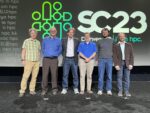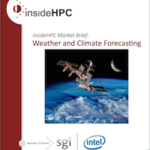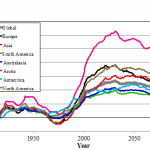A Lawrence Livermore National Laboratory (LLNL)-led effort that performed an unprecedented global climate model simulation on the world’s first exascale supercomputer has won the first-ever Association for Computing Machinery (ACM) Gordon Bell Prize for Climate Modelling, ACM officials announced Thursday. The Simple Cloud Resolving E3SM Atmosphere Model (SCREAM) team, led by LLNL staff scientist Peter Caldwell and […]
Weather and Climate Forecasting
In the pantheon of HPC grand challenges, weather forecasting and long-term climate simulation rank right up there with the most complex and com- putationally demanding problems in astrophysics, aeronautics, fusion power, exotic materials,and earthquake prediction, to name just a few. Modern weather prediction requires cooperation in the collection of observed data and sharing of forecasts output among all nations, a collabora- tion that has been ongoing for decades. This data is used to simulate effects on a range of scales— from events, such as the path of tornados, that change from minute to minute and move over distances measured in meters, to turnover of water layers in the ocean, a process that is measured in decades or even hundreds of years, and spans thousands of miles.
PNNL Simulations Point to Accelerating Climate Change
“An analysis of changes to the climate that occur over several decades suggests that these changes are happening faster than historical levels and are starting to speed up. The Earth is now entering a period of changing climate that will likely be faster than what’s occurred naturally over the last thousand years, according to a new paper in Nature Climate Change, committing people to live through and adapt to a warming world.”






